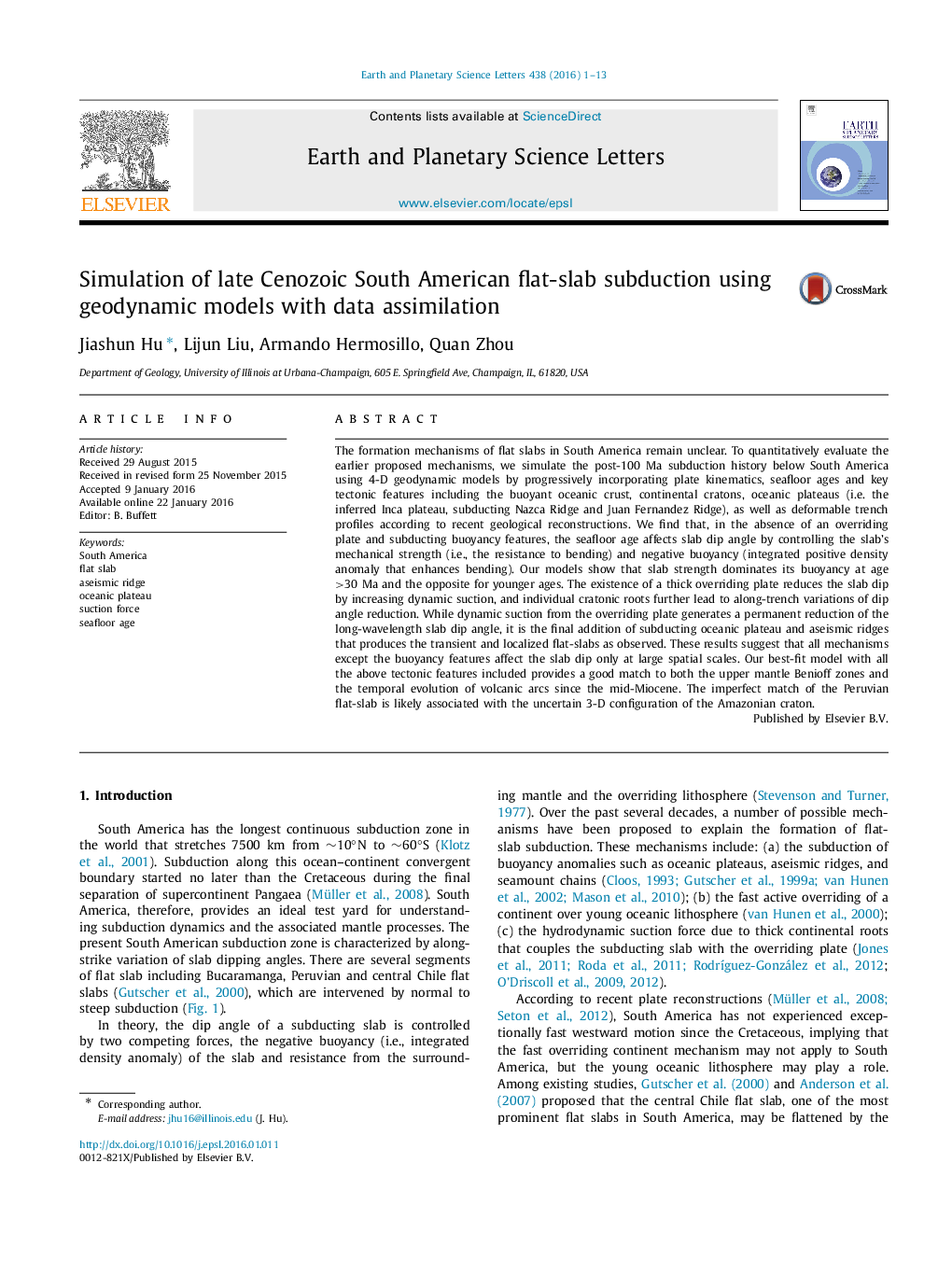| کد مقاله | کد نشریه | سال انتشار | مقاله انگلیسی | نسخه تمام متن |
|---|---|---|---|---|
| 4676929 | 1634718 | 2016 | 13 صفحه PDF | دانلود رایگان |
• We construct 3D models to simulate South American subduction since 100 Ma.
• The effect of seafloor age results in slab dip angle distribution opposite to observed.
• Dynamic suction from the overriding plate has a long-wavelength and prolonged effect on reducing slab dip angle.
• Subducting oceanic plateau and aseismic ridges effectively flatten the slab at local scales.
• Formation of South American flat slabs represents a multi-scale and multi-physics process.
The formation mechanisms of flat slabs in South America remain unclear. To quantitatively evaluate the earlier proposed mechanisms, we simulate the post-100 Ma subduction history below South America using 4-D geodynamic models by progressively incorporating plate kinematics, seafloor ages and key tectonic features including the buoyant oceanic crust, continental cratons, oceanic plateaus (i.e. the inferred Inca plateau, subducting Nazca Ridge and Juan Fernandez Ridge), as well as deformable trench profiles according to recent geological reconstructions. We find that, in the absence of an overriding plate and subducting buoyancy features, the seafloor age affects slab dip angle by controlling the slab's mechanical strength (i.e., the resistance to bending) and negative buoyancy (integrated positive density anomaly that enhances bending). Our models show that slab strength dominates its buoyancy at age >30 Ma and the opposite for younger ages. The existence of a thick overriding plate reduces the slab dip by increasing dynamic suction, and individual cratonic roots further lead to along-trench variations of dip angle reduction. While dynamic suction from the overriding plate generates a permanent reduction of the long-wavelength slab dip angle, it is the final addition of subducting oceanic plateau and aseismic ridges that produces the transient and localized flat-slabs as observed. These results suggest that all mechanisms except the buoyancy features affect the slab dip only at large spatial scales. Our best-fit model with all the above tectonic features included provides a good match to both the upper mantle Benioff zones and the temporal evolution of volcanic arcs since the mid-Miocene. The imperfect match of the Peruvian flat-slab is likely associated with the uncertain 3-D configuration of the Amazonian craton.
Journal: Earth and Planetary Science Letters - Volume 438, 15 March 2016, Pages 1–13
